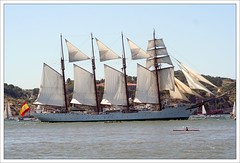* Make a map of N. Amer., the Caribbean, the Atlantic and Europe as well as W. Af. (4 pts.)
* Draw lines representing trade routes between the Old World (Europe, Africa) and the New World.
* Write some of the trade goods on the trade lines: gold, ivory, rum, sugar, slaves, etc.
* Identify Cuba, New Orleans, Venice, Rome, Paris, and Senegal & Nigeria.
* Add the notes below.
* Create an imaginative title.
The earliest sites for celebrations of Carnival are Venice and Rome. Identify and color their locations. But it was Paris that was the immediate model for Louisiana's early Carnival.
Carnival comes from the Latin Carne ("meat") and vale ("goodbye"): Carnival season is saying "goodbye to meat." The reason North Louisianians mistakenly call the season Mardi Gras ("Fat Tuesday") is because the region is mostly Protestant. The background of Carnival is Catholic.
Feasting is the theme of Carnival season until the end of Fat Tuesday. The next is Ash Wednesday, the beginning of the season of Lent. On Ash Wed. the priest says to the people at the service, "Remember, man: from dust you came and to dust you shall return."
Because slaves in New Orleans were treated so liberally, there was a lot of African cultural retention. Whites watched blacks dance, sing and parade in costume at the back of town site called Congo Square.
Thus each group influenced each other in the realm of style.
The social group that most deeply carries the Carnival/Mardi Gras tradition? Roman catholics.
Tuesday, February 13, 2007
Subscribe to:
Post Comments (Atom)


No comments:
Post a Comment